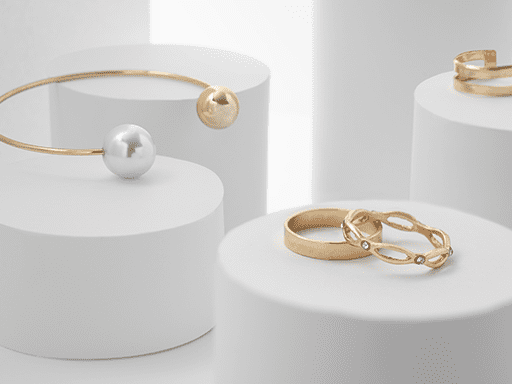Jewelry retailers — do you have trouble advertising your products on Google Shopping? The reason might be because you’ve adopted the conventional Google Shopping wisdom, which works great – for regular products. So how do you sell jewelry on Google Shopping?
As a high-end product retailer, there are a few key differences between your ads program and those of other retailers. That’s why we’ve put together these simple tips so you can start seeing an improvement in your accounts today.
These tips really work! During the pandemic, one particular client saw their highest month in sales yet following these tips! If you sell jewelry on Google Shopping, take this as proof that 1) these tips work and 2) you can continue to advertise and grow even in these trying times. Now, get ready to master selling high-end products on Google Shopping, and grow your account today!
Don’t have time to read the blog? Get a quick overview of how to sell jewelry and high-end items on Google Shopping in this video:

1. Be Mindful of Attribution When You Sell Jewelry on Google Shopping
Expensive purchases usually require more deliberation for consumers. There’s a lot to think about, “Should I spend this money right now?”, “Is this the best product out there?” Unlike buying a pair of socks online — simply clicking an ad, and then adding it to the cart — the sales cycle for high-end items is a lot longer, and more complicated.
Because of this, jewelry retailers should look at a longer attribution window. We suggest 30-60 days. Here’s an example.
Imagine you sell Rolex watches. Your buyer might follow this path to conversion:

1. A customer searches for Rolex watches and clicks on your PLA.
2. They view your page and then leave.
3. Through the week, they begin comparison shopping.
4. Two weeks later, they go to a physical location to see the watch.
5. Finally, they go home and purchase your product from your site.
Using a 14 day attribution window, you could no longer attribute the sale (even in part) to the PLA that they originally clicked on.
Now imagine this scenario across a number of products. Suddenly, your campaigns look as though they’re performing much less profitably than they actually are. A 30-60 day attribution window, though, would capture this sale and any others that occur along a similar timeline.
Want to learn more about attribution across platforms? Check out our ebook: “Metrics Don’t Lie: An In-Depth Guide to Attribution Models”

2. Phone and In-Store Purchases Create Incremental Lift
If you have in-store locations or take orders over the phone, consider the incremental lift these conversion paths add to your business – and account for those in your management of jewelry sales on Google Shopping!
Phone Sales
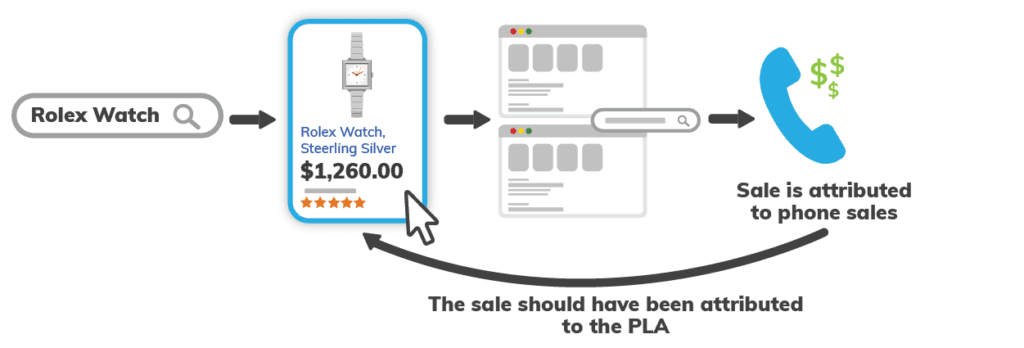
For example, if the shopper in the scenario above didn’t go to the store, and instead decided to buy the Rolex watch over the phone, the sale would be attributed to a phone sale. In reality, it should have been attributed to the PLA they clicked on.
Third-party call tracking can help reattribute sales made over the phone. This software connects the search history of customers with phone calls to your business, so you know if and when your digital advertising impacts phone sales.
See how we implemented third-party call tracking in this case study.
In-Store Sales
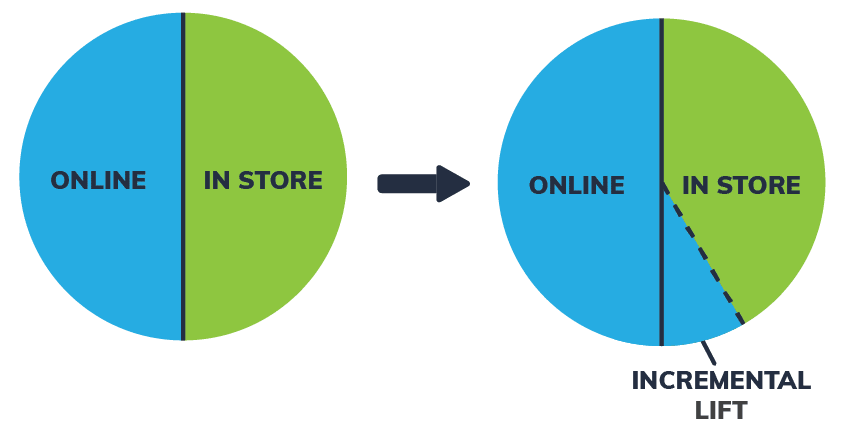
In-store orders are a little trickier. For these, you might want to rely on an assumption of incremental lift. Essentially, you need to assume that a certain percentage of sales are being influenced by your online ads, even if those sales aren’t directly attributed to ads.
Because of this, you should manually add in-store purchases to your metrics, so you can have an idea of whether these sales are trending in line with your campaign adjustments.

3. Consider Outliers (High Value SKUs)
What is the price range for the jewelry you sell on Google Shopping? Determine which products are outliers in this regard. If the majority of your products are priced between $1,000 and $5,000, for example, a product that costs $10,000 would be an outlier. Products like this that fall outside of your normal price range should be treated differently.
If these products don’t often receive clicks, you might want to consider lowering their CPC. Additionally, if an outlier product is purchased, it can greatly skew your average order value — so be aware of these when you analyze your campaign metrics.
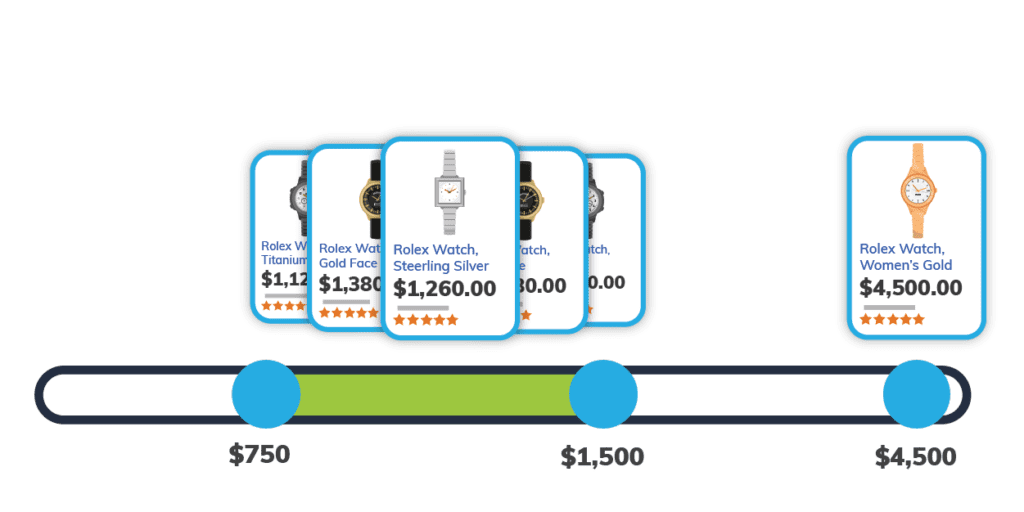
For example: If the majority of your products fall between $750 and $1,500, a product that retails for $4,500 would be an outlier. You might sell fewer of these than most of your other products – and it’s likely it attracts fewer clicks than other products. On the occasion you do sell one, it boosts your revenue considerably – so be cautious in making aggressive bid changes based on that number.

4. Bidding for Jewelry Retailers on Google Shopping
Compared to how you would normally bid on products sold on Google Shopping, luxury items may require a higher bid. This bid is justified because generally, these items produce a higher whole-dollar profit.
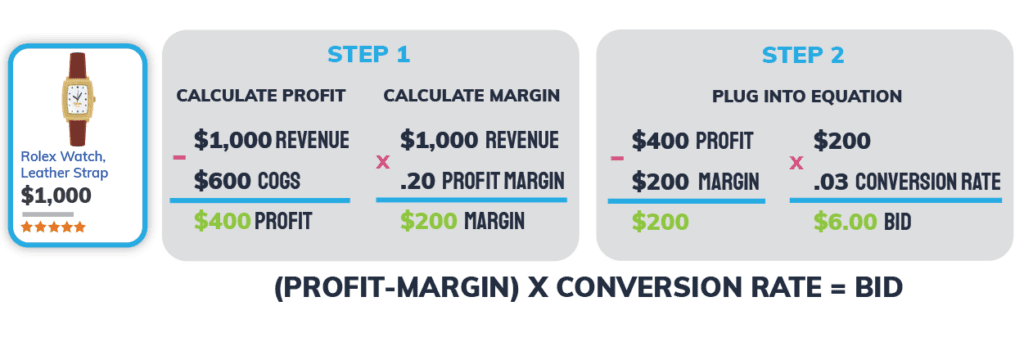
For example, consider an item that retails for $1,000. Even accounting for the extra clicks often needed to drive a sale and a relative cost of goods of 60%, that leaves $400 for ad spend and profit. If you’re aiming for a 20% profit margin, or $200, $200 still remains available as ad spend. With a 3% conversion rate (pretty modest), you’ll still be able to justify a $6 bid for this product – much larger than is often recommended for other products.
Like we mentioned earlier, high-end items typically have a longer sales cycle. Make sure that products with a longer sales cycle aren’t penalized by your bidding. Bid management is challenging for longer sales cycle products because you must take into account performance over a longer period of time. As time goes on, it is more that the customer will lose the cookie from your site. This makes tracking data over time more of a challenge, and thus making smart bidding decisions difficult.

5. Dealing with Fraud
This is an issue that can affect high-end retailers and jewelry retailers on Google Shopping. Fraud will skew your conversion metrics and make meaningful data useless when it comes to decision making. While you’re often catching these purchases promptly on the payment processing side, removing them from your campaign metrics is just as important. We recommend reconciling these numbers daily if possible, but certainly before you adjust bids or alter your strategy.
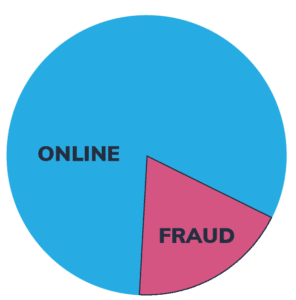
For a real world example of dealing with fraud, check out our case study, It’sHot.com Grows Profit with Omnitail, to see how we accounted for this kind of fraud in our strategy and improved one jewelry retailer’s campaigns.

Conclusion
Your products are high-end and deserve Google Shopping management to match. Try applying these steps across your campaigns to see the difference a strategy tailored to your products can make. Impressed by the results? We can tailor your strategy even more — to fit your individual business.
Reach out to us today, and let’s develop an action plan to grow your business.

